1. Uvođenje
Leptir ventil sa prirubnicom (FBV) je četvrtokretni ventil koji je široko poznat kao radni konj visokotlačnih i trajnih sistema za kontrolu fluida.
Karakteriziraju ih integralne prirubnice koje se pričvršćuju direktno na prirubnice cjevovoda, oni pružaju a krut, nepropusno, i strukturno stabilnu vezu,
kritična prednost u odnosu na ventile tipa wafer (štedi prostor, ali je pogodan za poslove niskog pritiska) i ventili u obliku ušica (umeren pritisak, često za nekritičnu uslugu).
Dizajniran za cjevovodi srednjeg do velikog prečnika, spojni leptir ventili usko popuštenje, pouzdanost konstrukcije, i jednostavnost održavanja.
Istovremeno, njihova svestranost čini ih nezamjenjivim pročišćavanje vode, HVAC mreže, i opšta industrijska prerada, gde njihov kompaktan dizajn, isplativost, i prilagodljivost u rasponima pritiska i temperature isporučuju dugoročnu operativnu vrijednost.
2. Šta je leptir ventil sa prirubnicom?
Osnovna definicija i princip rada
A leptir ventil sa prirubnicom (FBV) je a rotacijski sa četvrtinom okreta ventil dizajniran za regulaciju ili izolaciju protoka u cjevovodima.
Njegova definitivna karakteristika je integralne prirubnice, koji se pričvršćuju direktno na prirubnice cijevi (po ANSI B16.5 ili ISO 7005), stvaranje a krut, nepropusno, i stalnu vezu pogodan za rad pod visokim pritiskom.
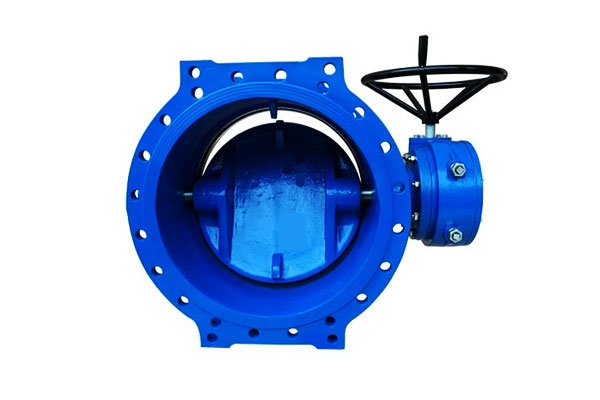
Ventil radi na jednostavnom principu:
- Potpuno otvoren (0°): Disk leži paralelno sa tokom, minimiziranje gubitka pritiska (tipično 1–3 psi za ventil od 6 inča pri nominalnom protoku).
- Gas (10–80°): Djelomična rotacija ograničava protok; dizajn ekscentričnih diskova pruža više linearne kontrole protoka od koncentričnih tipova.
- Potpuno zatvoreno (90°): Disk čvrsto pritišće sjedište, postizanje čvrstog zatvaranja. FBV su dvosmisleni, efikasno rukovanje tokovima naprijed i nazad.
Anatomija leptir ventila s prirubnicom
Leptir ventil sa prirubnicom je projektovan za izdržljivost i preciznost kontrole, obično se sastoji od šest osnovnih komponenti:
| Komponenta | Značajke dizajna | Primarna uloga |
| Tijelo (sa prirubnicama) | Liveno/kovano sa integralnim prirubnicama; rupe za vijke poravnate sa prirubnicama cevovoda. | Omogućava graničnu i trajnu montažu. |
| Disk | Kružna ploča (ravan ili ekscentrični profil). | Rotira za otvaranje/zatvaranje ili protok gasa. |
| Stabljika (Shaft) | Čvrsta šipka, zapečaćeno pakovanjem/O-prstenovima. | Prenosi obrtni moment sa aktuatora na disk. |
| Sjedalo | Otporan (EPDM/PTFE) ili metal (Stelliti, SS). | Osigurava nepropusno zaptivanje diska. |
| Zaptivka prirubnice | Kompresivni zaptivni materijal između prirubnica. | Sprečava eksterno curenje. |
| Aktuator | Priručnik, električni, pneumatski, ili hidraulički. | Pruža kontrolu četvrtine okreta za izolaciju ili modulaciju. |
Prirubnički vs. Wafer vs. Lug leptir ventili
The integralni dizajn prirubnice razlikuje FBV od tipova wafer i lug, nudeći jedinstvene prednosti za aplikacije visoke potražnje:
| Značajka | Leptir ventil sa prirubnicom | Vafer leptir ventil | Lug leptir ventil |
| Montaža | Pričvršćeno preko integralnih prirubnica | Stegnuti između prirubnica | Pričvršćen vijcima preko navojnih ušica |
| Ocena pritiska | ANSI 150–900 (28–210 bara) | ANSI 150–300 (28–70 bara) | ANSI 150–600 (28–140 bara) |
| Težina (6-inč, SS) | ~12 kg | ~5,6 kg | ~8 kg |
| Demontaža cjevovoda | Zahtijeva odvrtanje prirubnica | Zahtijeva uklanjanje para prirubnica | Moguće uklanjanje samo ventilom |
| Relativni trošak | Viši (1.5×) | Donji (0.7×) | Srednji (1.0×) |
| Najbolje za | Visok pritisak, stalna služba (ulja, plin, pare, hemikalije) | Niskog pritiska, kompaktni sistemi | Srednji pritisak, fleksibilne potrebe održavanja |
3. Varijacije dizajna: Koncentrično vs. Ekscentrični leptir ventili sa prirubnicom
Leptir ventili sa prirubnicom se prvenstveno klasifikuju po poravnanje diska i vretena, kritični faktor koji utiče ocjenu pritiska, Performanse za brtvljenje, zahtjevi za obrtnim momentom, i prikladnost za primjenu.
Koncentrični leptir ventili sa prirubnicom (Standardni dizajn)
Geometrija: Osovine diska i vretena su u ravni sa centrom provrta ventila, izradu dizajna koncentrična. Tokom rada, sjedište održava kontakt preko cijele površine diska.
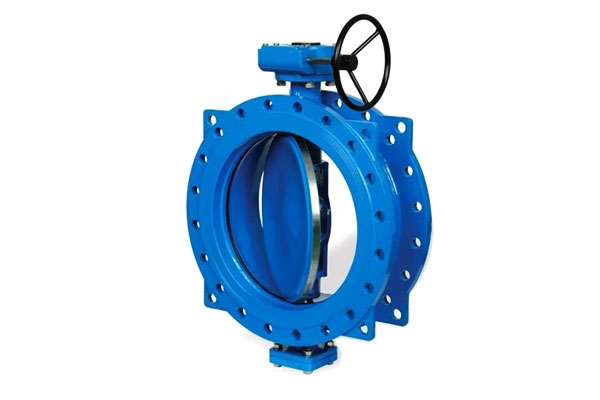
metrika performansi:
- Ocena pritiska: ANSI klasa 150–300 (28–70 bara na 20°C)
- Klasa curenja: API 609 Klasa IV (≤0,01% nominalnog protoka za tečnosti)
- Zahtjevi zakretnog momenta: 60–100 N·m (6-inch ventil, EPDM sjedište)
- Cycle Life: 10,000–20.000 ciklusa (elastično sjedalo ograničava životni vijek)
Prednosti:
- Jednostavan, isplativ dizajn
- Lako održavanje i zamena sedišta
- Pogodno za umjerene temperature i tekućine pod pritiskom
Ograničenja:
- Visoko trenje sedišta diska smanjuje efikasnost
- Nije prikladno za upotrebu na plin ili primjenu pod visokim pritiskom
- Ograničena izdržljivost pod abrazivnim ili visokotemperaturnim fluidima
Tipične aplikacije:
- HVAC sistemi za rashlađenu vodu
- Komunalni vodovod
- Niskog pritiska, nekritične industrijske usluge
Ekscentrični leptir ventili sa prirubnicom (Dizajn visokih performansi)
Pregled: Ekscentrični dizajni offset diska ili stabljike, smanjenje trenja diska o sjedište i poboljšanje performansi zaptivanja.
Ovi dizajni su idealni za visokotlačni, visoka temperatura, i primjene plina.
Single Eccentric (Offset Disc) Leptir ventil sa prirubnicom
Dizajn: Središte diska je pomaknuto od ose vretena, što minimizira kontakt sa sjedištem tokom rotacije, smanjenje trenja.
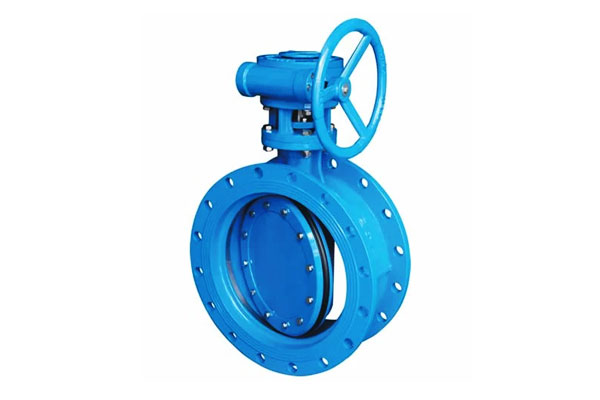
metrika performansi:
- Ocena pritiska: ANSI klasa 300–600 (70–140 bara)
- Klasa curenja: API 609 Klasa V (≤0,001% nominalnog protoka)
- Zahtjevi zakretnog momenta: 40–70 N·m (6-inch ventil, PTFE sjedište)—~30% niže od koncentričnih ventila
Aplikacije:
- Industrijski tretman vode
- Uljni vodovi niskog pritiska
- Aplikacije koje zahtijevaju umjerenu kontrolu protoka sa poboljšanom efikasnošću
Double Eccentric (Offset Disc + Stabljika) Leptir ventil sa prirubnicom
Dizajn: I centar diska i osovina vretena su pomaknute od centra provrta. Ovo eliminira kontakt diska i sjedišta do 80-85% zatvaranja, značajno smanjujući trenje i habanje.

metrika performansi:
- Ocena pritiska: ANSI klasa 600 (140 bar na 20°C); do nastave 900 sa metalnim sjedištima
- Klasa curenja: API 609 Klasa VI (≤0,00001% nominalnog protoka) — pogodan za servis na plin, uključujući gasovode prirodnog gasa
- Temperaturni raspon: -29°C do 482°C (metalna sedišta)
Aplikacije:
- Hemijska obrada
- Ulja & gasovoda
- Parni sistemi
- Industrijski fluidi pod visokim pritiskom koji zahtevaju čvrsto zatvaranje
Triple Eccentric (Offset + Tapered Disc) Leptir ventil sa prirubnicom
Dizajn: Dodaje a treći ofset uvođenjem konusne/konusne geometrije diska, postizanje a brtva metal na metal bez potrebe za elastičnim sjedištem.
Ovaj dizajn omogućava rad pod ekstremnim temperaturama i pritiscima.

metrika performansi:
- Ocena pritiska: ANSI klasa 900 (210 bar na 20°C)
- Temperaturni raspon: -29°C do 650°C (Stellite® ili sjedala od tvrdog metala)
- Cycle Life: 50,000–100.000 ciklusa (izdržljivost metalnog sedišta)
Aplikacije:
- Hipersonični sistemi za hlađenje vozila
- Pregrijani parovodi elektrane
- Rafinerija katalitički krekeri i petrohemijska prerada
- Ekstremna industrijska okruženja koja zahtijevaju nulto curenje i dug vijek trajanja
Rezime:
| Značajka | Koncentrično | Single Eccentric | Double Eccentric | Triple Eccentric |
| Poravnanje diska i vretena | Centralna linija | Disc offset | Disk + pomak stabljike | Disk + stabljika + konusni pomak |
| Ocena pritiska | 28–70 bara | 70–140 bara | 140–210 bara | 210 bar |
| Klasa curenja | IV | V | VI | VI (metal) |
| Zahtjevi zakretnog momenta | Umjeren | Niže od koncentričnog | Viši | Visoko (zahteva aktuator) |
| Temperaturni raspon | - | Umjeren | -29°C do 482°C | -29°C do 650°C |
| Tipična upotreba | Voda niskog pritiska/HVAC | Umjerene industrijske tekućine | Tečnosti/gasovi pod visokim pritiskom | Ekstremno industrijsko/petrokemijsko |
4. Materijali & Zaptivke leptir ventila s prirubnicom
Performanse, pouzdanost, i dugovječnost leptir ventila sa dvostrukom prirubnicom (FBVs) su pod jakim uticajem Izbor materijala za tijelo, diska, stabljika, i zaptivni elementi.
Odgovarajući materijali osiguravaju kompatibilnost s tekućinom, otpornost na koroziju, rukovanje visokim pritiskom, i pogodnost za ekstremne temperature.
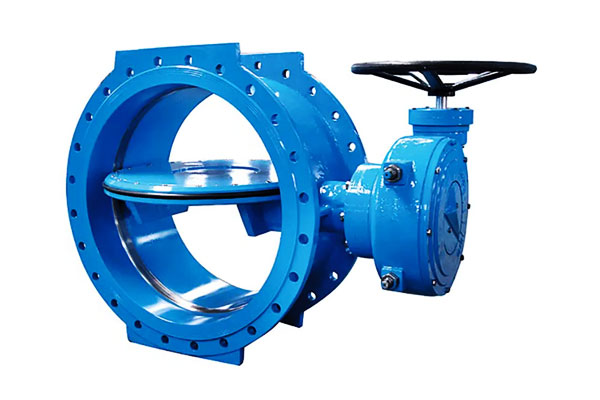
Materijali za tijelo
Telo ventila je primarna granica pritiska i mora izdržati mehaničko naprezanje, unutrašnji pritisak, i korozija okoline. Uobičajeni materijali za tijelo uključuju:
| Materijal | Karakteristike | Tipične aplikacije |
| Carbon čelik (A216 WCB) | Visoka čvrstoća, Umjerena otpornost na koroziju, isplativ | Voda, pare, nisko-korozivne hemikalije |
| Nehrđajući čelik (316/316L, A351 CF8M) | Izvrsna otpornost na koroziju, higijenski, umjerena otpornost na visoke temperature | Hemijska obrada, hrana & napitak, morske sredine |
| Duktilno gvožđe (EN-GJS-400-15, ASTM A536) | Dobra snaga, isplativ, otporan na koroziju kada je premazan | Distribucija vode, otpadne vode, Hvac |
| Legura čelika (Hastelloy C276, Dupleks 2205) | Vrhunska hemijska i temperaturna otpornost | Petrohemijski, kiseline, agresivne industrijske tekućine |
Disc Materials
Disk je direktno izložen protoku i često rukuje abrazivna, erozivno, ili korozivne tečnosti. Izbor se zasniva na Mehanička čvrstoća, Otpornost na koroziju, i kompatibilnost zaptivanja:
- 316 Nehrđajući čelik: Široko se koristi za kemikalije opće namjene, voda, i parne aplikacije.
- Hastelloy C276: Otporan na oksidirajuće i reducirajuće kemikalije; pogodan za agresivne kiseline.
- Nodularno željezo sa PTFE premazom: Nisko trenje, opcija otporna na koroziju za vodu i blage hemikalije.
- Stelliti®-Platirani diskovi: Primene na visokim temperaturama i habanju, uključujući pregrijanu paru i petrohemikalije.
Napomena o dizajnu: Disk može biti koncentrična, ekscentričan, ili trostruki ofset, sa metalnim ili elastičnim premazom za poboljšanje brtvljenja i smanjenje habanja.
Stem Materials
Stabljika prenosi obrtni moment sa aktuatora ili ručnog točka na disk i izložena mu je mehaničko naprezanje, pritisak, i kontakt sa tečnošću. Uobičajeni materijali:
| Materijal | Karakteristike | Aplikacije |
| 416 Nehrđajući čelik | Visoka čvrstoća, Dobra otpornost na koroziju, isplativ | Voda, Hvac, opšta industrija |
| 316/316L Nerđajući čelik | Izvrsna otpornost na koroziju, umjerena otpornost na visoke temperature | Hemikalija, marinac, hrana & napitak |
| Hastelloy C276 / Duplex Steel | Ekstremna otpornost na koroziju i temperaturu | Agresivne hemikalije, petrohemija pod visokim pritiskom |
Materijali sjedala i vrste brtvi
The sjedište čini kritično zaptivno sučelje sa diskom, određivanje klase curenja, zahtjev za obrtnim momentom, i radni vijek. Izbor zavisi od tip tečnosti, pritisak, i temperaturu.
| Vrsta sjedišta | Materijal | Klasa curenja | Temperaturni raspon | Bilješke |
| Resilient Seat | EPDM, NBR, FKM, PTFE | API 609 Klasa IV–V | -50°C do 200°C | Odlično zaptivanje tečnosti; Niski obrtni moment; nije za paru visoke temperature |
| Metalno sjedište | Nehrđajući čelik, Stellite® | API 609 Klasa VI | -29°C do 650°C | Visoka izdržljivost; pogodan za gasove, visokotlačni, i aplikacije na visokim temperaturama |
| PTFE-obložena | Čisti PTFE ili punjeni PTFE | API 609 Klasa V | -50°C do 200°C | Hemijski otporan; nisko trenje; može puzati pod visokim pritiskom |
| Elastomer + Metal Hybrid | EPDM/metal ili PTFE/metal | API 609 Klasa V–VI | -29°C do 482°C | Kombinira nepropusnost sa otpornošću na habanje; uobičajeno u dvostrukim ekscentričnim dizajnom |
Brtve i sučelja aktuatora
- Zaptivke prirubnice: Grafit, PTFE, ili nitrilne brtve osigurati nepropusni prirubnički priključci između ventila i cjevovoda.
- Brtve aktuatora: O-prstenovi ili PTFE čaure sprečavaju curenje tečnosti duž stabljike istovremeno omogućavajući nesmetan prenos obrtnog momenta.
5. Proizvodnja & Lijevačke metode leptirastih ventila s prirubnicom
Proizvodnja od leptir ventili sa prirubnicom (FBVs) zahtijeva visoku preciznost, robusni materijali, i striktno pridržavanje međunarodnih standarda kao što je API 609, ISO 5752, i ANSI B16.5.
Ventili dizajnirani za aplikacije visokog pritiska i visokih performansi—poput ulja & gasovoda, Hemijske biljke, i proizvodnja energije—mora biti izložena Dimenzionalna tačnost, strukturalni integritet, i performanse nepropusne.
Lijevanje komponenti leptir ventila
Lijevanje je primarna metoda za oblikovanje tijela ventila i diskova, omogućavaju složene geometrije i isplativu proizvodnju. Za velike ventile (tipično gotovo 12 inča), livenje pijeska se široko koristi.
U ovom procesu, rastopljenog metala (1450–1550°C) sipa se u pješčane kalupe vezane za smolu.
Lijevanje u pijesak nudi tolerancije oko ±0,5 mm, što ga čini pogodnim za ventile od ugljeničnog čelika ili nodularnog gvožđa koji se koriste u komunalnim vodovodima ili industrijskim cevovodima niskog pritiska.
Za male do srednje ventile (2–12 inča) zahtijevaju veliku preciznost dimenzija i otpornost na koroziju, Investicijska livenja (metoda izgubljenog voska) je zaposlen. Voštane šare su obložene keramičkim školjkama, istopila, i zamijenjen rastopljenim metalom.
Ovom metodom se postižu uske tolerancije (±0,1 mm) i glatke površine, omogućavajući precizne karakteristike kao što su duple ekscentrične glavčine diska.
Lijevanje je idealno za 316L nehrđajući čelik, Hastelloy, ili druge legure otporne na koroziju.
Kovanje: Komponente visoke čvrstoće
Kovanje je poželjna metoda za kritičan, komponente visokog pritiska kao što su tela, prirubnice, i stabljike, jer proizvodi superiornu strukturu zrna i veću vlačnu čvrstoću.
Grijani metal (1100–1200°C) se oblikuje pod hidrauličnim prešama ili kalupima, što rezultira 20-30% jačim dijelovima od ekvivalentnih odljevaka.
Kovane komponente se obično koriste u ANSI klasi 600 ili viši ventili za ulje & gasovoda, elektrane, i druge zahtjevne industrijske primjene.
Metode kovanja uključuju kovanje na otvorenom za velike prilagođene dijelove, zatvoreno kovanje za komponente srednje veličine sa preciznim dimenzijama, i uznemireno kovanje kako bi se ojačali kritični spojevi kao što su glavčine diskova.
Obrada: Precision Finishing
Nakon livenja ili kovanja, CNC obrada osigurava visoku točnost dimenzija, Površinski finiš, i pravilno poravnanje:
- Prirubnice su brušeni kako bi se postigla ravnost iznutra 0.1 mm i poravnanje rupa za vijke prema ANSI B16.5 standardima, osiguravanje spojeva bez curenja.
- Provrti sedišta su brušeni ili mašinski obrađeni do Ra 1,6–3,2 μm kako bi se omogućilo pravilno spajanje sjedišta i efikasno zaptivanje.
- Diskovi i čvorišta, posebno ekscentričnih dizajna, su završeni 5-osnim CNC glodanjem kako bi se održala ravnost unutar 0.05 mm za čvrsto zatvaranje.
- Stabljike i ležajevi se okreću i glodaju sa preciznošću da garantuju glatku rotaciju i ispravan prenos obrtnog momenta.
Toplotni tretman: Mehanička i korozivna svojstva
Toplinska obrada poboljšava snagu, tvrdoća, i otpornost na koroziju ovisno o korištenom materijalu:
- Carbon čelik (WCB): Kaljeno na 850°C i temperirano na 650°C kako bi se postigla vlačna čvrstoća ≥485 MPa.
- 316L Nerđajući čelik: Žarenje u otopini na 1050-1100°C, nakon čega slijedi gašenje vodom kako bi se povratila otpornost na koroziju i homogenizirala mikrostruktura.
- Dupleks 2205: Žarenje u rastvoru na 1020–1080°C za postizanje uravnoteženog odnosa austenit/ferit (50:50), optimiziranje čvrstoće i otpornosti na koroziju.
Obrada površine: Dugovječnost & Otpornost na koroziju
Površinska obrada osigurava izdržljivost u teškim okruženjima:
- Pasivizacija za 316L nehrđajući čelik poboljšava prirodni sloj krom oksida, poboljšanje otpornosti na koroziju za do 20%.
- Epoksidni premazi od 100–150 μm štite tijela od ugljičnog čelika u ulju & gasovoda od korozije tla i atmosfere.
- Elektropoštovanje koristi se u sanitarnim aplikacijama (hrana, napitak, farmaceutski proizvodi) za postizanje Ra ≤0,8 μm, uklanjanje mikroskopskih pukotina i mrtvih zona bakterija.
Montaža & Osiguranje kvaliteta
Nakon strojne obrade i površinske obrade, ventili prolaze montažu i rigoroznu kontrolu kvaliteta:
- Integracija sjedišta i diska: Sjedala su zalijepljena ili presovana, a ekscentrični diskovi su pažljivo poravnati za precizno zatvaranje.
- Montaža stabljike: Ležajevi, pakiranje, i O-prstenovi su postavljeni, i moment je provjeren.
- Hidrostatsko ili pneumatsko ispitivanje: Potvrđuje performanse nepropusnosti pod projektnim pritiskom.
- Nerazorno ispitivanje (NDT): Metode kao što je rendgen, ultrazvučan, ili inspekcije penetranta boje otkrivaju unutrašnje nedostatke.
- Kalibracija aktuatora: Priručnik, električni, pneumatski, ili se hidraulički aktuatori testiraju na tačnost momenta i hoda.
6. Ocene pritiska, Veličine & Standardi
Leptir ventili sa prirubnicom (FBVs) dizajnirani su za pouzdanost u širokom rasponu pritisaka, veličine, i industrijskim standardima.
Pravilan odabir osigurava sigurnost, dugoročne performanse, i kompatibilnost sa sistemima cjevovoda.
Ocene pritiska
| Klasa pritiska | Maksimalni radni pritisak (20° C) | Tipičan materijal sedišta | Bilješke / Aplikacije |
| ANSI klasa 150 | 19 bar | EPDM, PTFE | Voda niskog pritiska i HVAC sistemi |
| ANSI klasa 300 | 51 bar | EPDM, PTFE | Komunalna voda, industrijski cjevovodi niskog pritiska |
| ANSI klasa 600 | 102 bar | Metalni, Kompozitni | Ulja & plin, Hemijska obrada |
| ANSI klasa 900 | 155 bar | Metalni | Paha visokog pritiska, rafinerija, usluga ekstremnih temperatura |
Standardne veličine
| Nominal Diameter (DN) | Inch Size | Tipične aplikacije | Bilješke |
| DN 50–150 | 2-6 | Laboratorijski sistemi, Hvac, mali vodovodni cjevovodi | Kompaktan, lako se instalira |
| DN 200–600 | 8–24 | Komunalna voda, Hemijska obrada, industrijski cjevovodi | Standardni industrijski asortiman |
| DN 700–1200 | 28–48 | Nafta velikih razmera & plin, tretman otpadnih voda, elektrane | Visok protok, servis visokog pritiska |
| DN 1400–2000+ | 56–80+ | Teška industrija, rafinerije, hidroelektrana | Često je potrebna proizvodnja po narudžbi |
Licem u lice dimenzije: Obično su u skladu sa ISO 5752 Serija 10 ili API 609 za laku zamjenjivost.
Ključni standardi & Certifikati
| Standard / Certifikacija | Obim | Primjena / Relevantnost |
| API 609 | Dizajn & ispitivanje industrijskih leptir ventila | Opće industrijske usluge |
| ISO 5752 | Licem u lice & dimenzije prirubnice | Osigurava zamjenjivost |
| ASME B16.34 | Ocene pritiska i temperature za metalne ventile | Strukturni integritet & sigurnost |
| MSS SP-67 | Određivanje veličine & standardizacija koeficijenta protoka | Precizna kontrola protoka |
| ASTM A216 / A351 | Carbon čelik & Odlivci od nehrđajućeg čelika | Kvalitet materijala za rad pod pritiskom |
| ASME B16.5 | Dimenzije prirubnice & šabloni vijaka | Kompatibilnost sa cjevovodima |
| API 598 / ISO 5208 | Shell & ispitivanje curenja sjedišta | Osigurava performanse nepropusnosti |
| NACE MR0175 / ISO 15156 | Otpornost na koroziju za kiselo ulje & gas servis | Dugoročna pouzdanost u agresivnim okruženjima |
| PED 2014/68/EU | Usklađenost opreme pod pritiskom (Evropa) | Pravni & usklađenost sa sigurnošću za EU instalacije |
7. Pokretanje & Kontrolni sistemi
Leptir ventili sa prirubnicom su uređaji za četvrtinu okreta zahtijevaju aktuatore koji mogu rotirati za 90°.
Izbor aktuatora ovisi o veličini ventila, zahtjev za obrtnim momentom, tip tečnosti, i sofisticiranost kontrole.
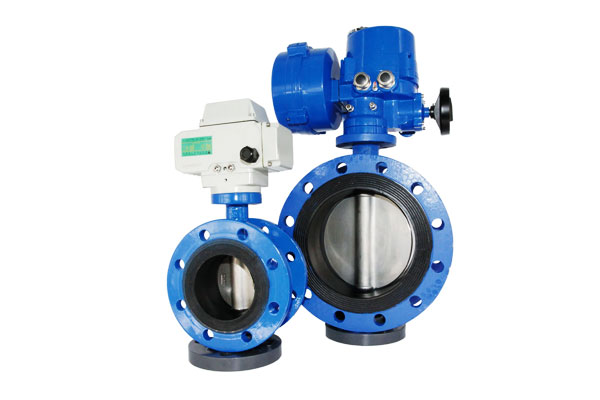
Uobičajeni tipovi aktuatora i specifikacije
| Tip aktuatora | Tipična veličina ventila (Inches) | Opseg obrtnog momenta (N·m) | Snaga / Izvor energije | Vrijeme odgovora | Mogućnost kontrole | Fail-Safe opcija |
| Manual Handwheel | 2-6 | 10-50 | Ljudska operacija | <5 s | On/Off | N / a |
| Operator zupčanika | 8–24 | 80–300 | Ručno sa mehaničkom prednošću | 30–60 s | On/Off | N / a |
| Električni aktuator | 2–36 | 50–1000 | AC 110/220V, DC 24V | 5–30 s | Moduliranje /On/Off | Rezervna baterija |
| Pneumatski aktuator | 2–36 | 50-500 | 6–8 bara komprimovani vazduh | 0.5–5 s | Moduliranje /On/Off | Prolećni povratak |
| Hidraulični aktuator | 12–48 | 500–2000 | 10–30 MPa hidraulično ulje | 1–10 s | On/Off | Rezerva pritiska |
Ključna dodatna oprema za poboljšanu kontrolu
- Pozicionirani: Pruža preciznu modulirajuću kontrolu (±0,5% tačnosti), ključno za primjene kao što je HVAC rashlađena voda, Hemijsko doziranje, ili industrijske procesne linije.
- Prekidači obrtnog momenta: Zaštitite disk i sjedište od prekomjernog zatezanja, sprečavanje preranog trošenja ili oštećenja.
- Limit Switches: Isporučite povratnu informaciju o otvorenom/zatvorenom položaju SCADA ili DCS sistemima za daljinski nadzor i automatske sigurnosne protokole.
- Solenoidni ventili & Filteri za zrak (za pneumatske aktuatore): Osigurajte brzo, pouzdano aktiviranje dok štiti unutrašnje komponente aktuatora od zagađivača.
8. Geometrija kraja prirubnice & Interface
The dizajn kraja s prirubnicom je definitivna karakteristika leptirastih ventila, osiguravanje a krut, siguran, i nepropusni spoj na cevovodne sisteme.
Geometrija je globalno standardizirana kako bi se omogućila potpuna zamjenjivost među proizvođačima.
Standardi prirubnica & Kompatibilnost
Leptir ventili sa prirubnicom su mašinski obrađeni da odgovaraju prirubnicama cevovoda dimenzije, uzorci rupa za vijke, i ocene pritiska. Najčešći standardi uključuju:
| Standard | Region / Primjena | Klase pritiska | Bilješke |
| ASME B16.5 | Sjeverna Amerika / Global | Klasa 150–900 | Široko se koristi u ulju, plin, hemikalija, i energetski sektori |
| ISO 7005 | International | Pn 6-pn 160 | Metrički sistem ekvivalentan ASME |
| U 1092-1 | Evropa | PN 10-PN 160 | Koristi se u EU cjevovodima i procesnim industrijama |
| HE B2220 | Japan / Azija | 5K–40K | Uobičajeno u azijskim industrijskim mrežama |
Dimenzionalna geometrija
Geometrija prirubničkog kraja obično uključuje:
- Raised Face (RF): Standardna zaptivna površina, 2– 6 mm podignuta površina oko provrta, osigurava ravnomjernu kompresiju brtve.
- Flat Face (FF): Koristi se sa cjevovodima od livenog gvožđa kako bi se izbeglo preopterećenje prirubnica.
- Prstenasti spoj (RTJ): Obrađeni žljebovi za metalne zaptivke, pogodan za usluge visokog pritiska/visoke temperature (do 210 bar, 650° C).
| Geometry Type | Raspon pritiska | Tipične aplikacije |
| Flat Face (FF) | Niska (Pn 6-pn 16) | Distribucija vode, Hvac |
| Raised Face (RF) | Srednji (PN 10-PN 100) | Ulja & plin, Hemijske biljke |
| RTJ | Visoko (PN 100-PN 160, Klasa 600–900) | Offshore, rafiniranje, parne linije |
9. Industrijska primjena leptirastih ventila s prirubnicom
Leptir ventili sa prirubnicom su svestran, ventili za četvrtinu okreta visokih performansi široko se koriste u industrijskim sektorima zbog svoje pouzdanosti, kompaktan dizajn, i prilagodljivost širokom rasponu pritisaka, temperature, i tečnosti.
Voda i tretman otpadnih voda
- Primjena: Izolacija protoka, Hemijsko doziranje, i sistemi za povratno ispiranje.
- Prednosti: Čvrsto zatvaranje, pad niskog pritiska, Sjedišta otporna na koroziju za tretiranu vodu ili kemijske aditive.
- Primer: Komunalne vodovodne mreže koriste leptir prirubničke ventile za prečnike većeg 12 inča, osiguravajući rad lak za održavanje.
Industrija nafte i gasa
- Primjena: Cjevovodi sirove nafte, rafinirani proizvodi, distribucija gasa, i offshore platforme.
- Prednosti: Tolerancija visokog pritiska (ANSI klasa 600 i iznad), sposobnost dvosmjernog protoka, kompatibilnost sa ugljovodonicima i korozivnim tečnostima.
- Primer: Dvostruki ili trostruki ekscentrični leptir ventili s prirubnicom kontroliraju naftovode i plinovode gdje su minimalno curenje i visoka pouzdanost obavezni.
Generacija energije
- Primjena: Pare, rashladna voda, i sistemi napojne vode u termo i nuklearnim postrojenjima.
- Prednosti: Tolerancija na visoke temperature, čvrsto zaptivanje za parne vodove, brzo aktiviranje od četvrtine okreta radi sigurnosti.
- Primer: Trostruki ekscentrični leptir ventili s prirubnicom upravljaju pregrijanom parom na 482°C u vodovima napojne vode elektrane.
Hemijska i petrohemijska obrada
- Primjena: Agresivne hemikalije, kiseline, i visokotemperaturnih procesa.
- Prednosti: Materijalna svestranost (316L, Hastelloy, Dupleks 2205), precizno prigušivanje, minimalno trenje za kontrolirani protok.
- Primer: Ekscentrični leptir ventili s prirubnicom s metalnim sjedištima sprječavaju curenje u vodovima sumporne kiseline ili kaustične sode.
Grijanje, Ventilacija, i klima uređaj (Hvac) i industrijski sistemi za hlađenje/toplu vodu
- Primjena: Regulacija protoka u krugovima rashlađene vode, rashladni tornjevi, i sistemi grijanja.
- Prednosti: Isplativ, lagana, ocjena niskog tlaka pogodna za nekritične primjene, lako održavanje.
- Primer: Koncentrični leptir prirubnički ventili efikasno regulišu distribuciju rashlađene vode u celoj zgradi.
Hrana, Beverage, i farmaceutske industrije
- Primjena: Linije za sanitarnu obradu, CIP (Čisto na mjestu) sustavi.
- Prednosti: Elektropolirani nerđajući čelik, Sedišta odobrena od strane FDA, glatke površine uklanjaju zone rasta bakterija.
- Primer: Leptir ventili s prirubnicom sa EPDM ili PTFE brtvama osiguravaju higijensku kontrolu protoka u punionicama pića.
Rudarstvo i rukovanje gnojovkom
- Primjena: Cjevovodi jalovine, transport stajnjaka, i kontrolu vode.
- Prednosti: Robusna konstrukcija, diskovi i sjedišta otporni na habanje, kompatibilnost s viskoznim tekućinama ili tekućinama punim čestica.
- Primer: Leptir ventil sa dvostrukom prirubnicom od ugljeničnog čelika sa kaljenim sedištima rukuje mineralnim kašama bez brzog trošenja.
10. Poređenje sa ostalim ventilima
| Značajka / Tip ventila | Leptir ventil sa prirubnicom | Ventil za vrata | Globe ventil | Kuglasti ventil | Plug Valve |
| Operacija | Četvrtina okreta (90°) | Linearan (stabljika koja se diže/ne diže) | Linearan (gas/otvori/zatvori) | Četvrtina okreta (90°) | Četvrtina okreta (90°) |
| Sposobnost isključivanja | Umjereno do čvrsto (Klasa IV–VI) | Odličan (metal na metal) | Odličan (metal na metal) | Odličan (nepropusno za mehuriće) | Dobro do odlično |
| Ocena pritiska | ANSI klasa 150–900 (28–210 bara) | ANSI klasa 150–2500 | ANSI klasa 150–600 | ANSI klasa 150–900 | ANSI klasa 150–600 |
| Kontrola protoka / Gas | Umjerena preciznost; ekscentrični dizajn se poboljšava | Loš; uglavnom on/off | Odličan; dizajniran za prigušivanje | Ograničen; uglavnom on/off | Umjeren |
| Raspon veličine | 2–48 inča (DN50–1200) | 0.5–120 inča | 0.5–48 inča | 0.5–48 inča | 0.5–24 inča |
| Težina | Lagana do umjerena | Teška | Umjeren | Light | Umjeren |
| Održavanje | Lako (prirubnički priključak; zamena sedišta) | Tesko (rastaviti, teške komponente) | Umjeren (pakovanje stabljike, habanje sedišta) | Lako (uklanjanje lopte, minimalni dijelovi) | Umjeren |
| Trošak | Umjeren | Visoko | Visoko | Visoko | Umjeren |
| Instalacijski prostor | Kompaktan | Veliki | Umjeren | Kompaktan | Umjeren |
| Najbolje aplikacije | Voda, otpadne vode, Hvac, hemikalija, ulja & gasovoda | Izolacija visokog pritiska | Regulacija protoka i prigušivanje | On/off kontrola, Korozivne tečnosti, visokotlačni | Muljci, ulja, plin, korozivne tečnosti |
| Bidirectional Flow | Da | Da | Obično | Da | Obično |
| Vrijeme odgovora | Brzo (četvrtina okreta) | Sporo (linearno putovanje) | Sporo | Brzo (četvrtina okreta) | Brzo (četvrtina okreta) |
11. Zaključak
The leptir ventil sa prirubnicom je svestrano i isplativo rješenje za kontrolu tekućine, nudi balans kompaktnog dizajna, visok kapacitet protoka, i pouzdano zaptivanje.
Njegova prilagodljivost različitim materijalima, klase pritiska, i metode aktiviranja čine ga nezamjenjivim u svim industrijama u rasponu od komunalne vode do petrohemije.
Za inženjere i timove za nabavku, odabir pravog FBV-a uključuje evaluaciju kompatibilnost medija, radni uslovi, metrike performansi, i troškovi životnog ciklusa.
Uz stalni napredak u materijalima i automatizaciji, leptir ventili s prirubnicom će ostati kamen temeljac industrijske kontrole protoka.
Prilagođeni ventili iz DEZE Foundry
Od postrojenja za prečišćavanje vode i HVAC sistema do ulja & gasovoda, Hemijski reaktori, i mreže za proizvodnju električne energije, leptir ventili s prirubnicom pružaju preciznu regulaciju protoka i čvrsto zatvaranje u zahtjevnim uvjetima.
Njihov rad u četvrtini okreta, kompaktna struktura, i široke mogućnosti materijala omogućavaju prilagođavanje specifičnim fluidima, pritisci, i temperature.

Kao profesionalna livnica ventila i dobavljač, mi pružamo po meri projektovani leptir ventili sa prirubnicom i precizno livene komponente, ispunjavanje međunarodnih standarda (API, ISO, ANSI) istovremeno osiguravajući isplative performanse.
Bez obzira da li vaš projekt zahtijeva uslugu visokog prečnika visokog pritiska, legure otporne na koroziju, ili optimizirani dizajn za efikasnost održavanja, naša proizvodna stručnost osigurava pouzdana rješenja prilagođena vašoj industriji.
Kontaktirajte nas sada!
FAQs
Leptir ventili sa prirubnicom mogu da podnose usluge gasa visokog pritiska?
Da—dvostruki/trostruki ekscentrični ventili s prirubnicom sa metalnim sjedištima (API 609 Curenje klase VI) i ANSI klase 300–900 ocjene su pogodne za plin pod visokim pritiskom (E.g., prirodni gas, azot).
Osigurajte usklađenost sa ISO 15848-1 Klasa AH za niske fugitivne emisije.
Koja je maksimalna veličina leptir ventila s prirubnicom?
Većina proizvođača nudi leptir ventile s prirubnicom do 48 inča (1200 mm) u prečniku, pogodan za velike postrojenja za preradu vode i ulja & gasovoda.
Prilagođeni dizajni mogu doseći 60 inča (1500 mm) za specijalizovane aplikacije.
Kako da spriječim curenje zaptivke prirubnice?
Koristite zaptivke kompatibilne s tekućinom/temperaturom (E.g., grafit za paru, PTFE za hemikalije); zategnite vijke unakrst (po ASME PCC-1) do ujednačenog obrtnog momenta (E.g., 70 N·m za 6-inčni ANSI 300 prirubnice); zamijenite zaptivke svake godine.
Jesu li leptir ventili s prirubnicom pogodni za sanitarne usluge?
Da—odaberite 316L tijela s elektropoliranim površinama (Ra ≤0,8 μm), PTFE sedišta, i prirubnice sa tri stezaljke (3-A/EHEDG usklađen).
Ovi ventili se koriste u mljekarstvu, napitak, i farmaceutska proizvodnja.
Koja je razlika između ANSI klase 300 i 600 prirubnički ventili?
ANSI klasa 300 ventili rukuju do 70 bar (20° C), dok Class 600 obrađuje do 140 bar (20° C).
Klasa 600 ventili imaju deblja tijela (20–30 mm vs. 15–20 mm za klasu 300) i jače prirubnice, što ih čini pogodnim za aplikacije pod visokim pritiskom kao što su rafinerije i morski cjevovodi.



